This past February 25th, Nitehawk Cinema hosted the latest Kevin Geeks Out show, focusing on Wigs, Toupees, and Hairpieces in movies. It was my great honor to be among the talented and hysterical presenters. I got the chance to talk about one of the greatest movie stars of the past century, as part of my mission to remind people of his greatness. The following is what I presented:
It feels like high time to remember what makes Burt Reynolds so important. In the late 1970s and the early 1980s he was the number-one movie star in the country for five years straight. For that reason, Burt’s story is part of America’s story. He met everybody. His memoir is loaded with many of the most famous people of the past century. His book is like Forrest Gump, if Forrest Gump was Burt Reynolds.

Why am I bringing up Burt Reynolds in a show about Wigs, Toupees, and Hairpieces? There are at least two big reasons, and I’ll get to them both. I’d argue that hair is a central theme of Burt’s stardom, and it’s also part of the reason we lost track of him.


For a good part of his career, Burt didn’t have his signature mustache. Here he is taking a bath in SAM WHISKEY from 1969. That same year, Burt grew a mustache for his role in 100 RIFLES opposite Jim Brown and Raquel Welch.

But one of Burt’s signature roles had nothing to do with the mustache. Here he is in DELIVERANCE from 1972. It’s a strong movie and Burt is a big part of what makes it that way. In an alternate universe, we can imagine, Burt continued on this hairless path. But things shook out differently.

Burt says he grew the mustache because he was tired of being compared to Marlon Brando. This is Burt from an episode of The Twilight Zone, early in his career, where he plays a sort of Brando type actor. In the book Burt tells a story about Brando cornering him at a party to accuse him of cashing in on the resemblance. Burt said, “I’m not having surgery because you don’t like the way I look. But I promise not to get fat.”

So, the mustache. This is the popular image of Burt Reynolds in people’s mind. At one time in American pop culture, a mustache was a symbol of maleness, of virility. Maybe it was a Teddy Roosevelt thing. But as time went on, and especially nowadays, the mustache seems to promise comedy.
Ron Swanson.
Ned Flanders.
Chuck Norris.

That’s the catch-22: It’s partly because of the very sign of his legendary machismo that people stopped taking Burt Reynolds seriously.
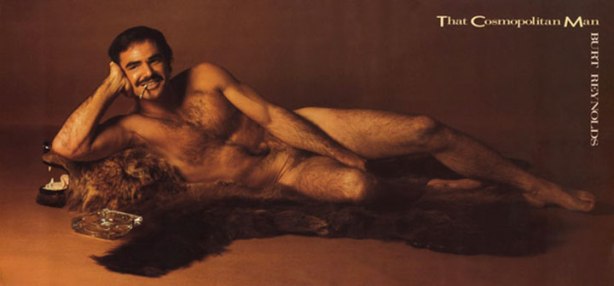
And this is another reason. In 1972 Burt posed naked for Cosmopolitan magazine. He did it right beforeDELIVERANCE made him a huge star. Burt did it for a laugh, but it worked against him. People didn’t get it.

As you can see from this poster for FUZZ, that photoshoot haunted his image.

Most people see Burt as a playboy, as a goofball. They don’t remember how good an actor he was, and how great a movie star he was.

This is Burt (on the far right) dancing at a party near Steve McQueen and his wife. It’s true that Burt Reynolds was always fun. It was part of his image.

Another thing about Burt Reynolds that makes him awesome, but that also works against him, is his openness and honesty. He called his own movies crap when they were crap, and even when they weren’t. He was never afraid to be the butt of the joke, but maybe people stopped noticing he was in on it.

Here’s another thing: In America, you can’t ever admit you wear a hairpiece. William Shatner is an example of a guy who didn’t hide it, and so he’s generally treated as a punchline.

Here’s a guy who never admits it.

As long as you never admit it isn’t real, you’re invincible.

Even when there’s relatively apparent visual proof that you’ve had work done on your hairline…
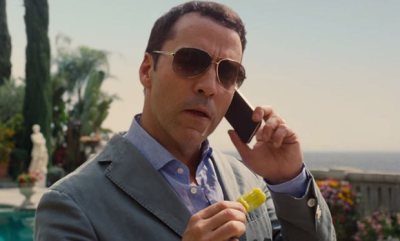
As long as you don’t admit it, you’re golden. The second you admit it, you’re Samson post-Delilah.
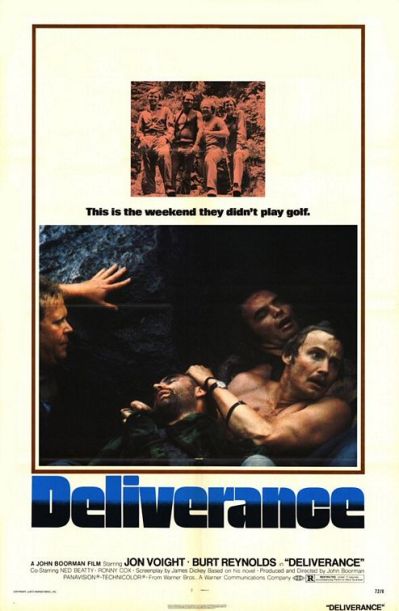
Burt says, “I’ve always been frank about my hair, because if you deny it, you’re fooling yourself. Everybody else will do jokes about it. It’s better if you do the jokes first.” And so he did. But I think it made people forget what an effective dramatic actor he was.

Fun story about Burt and the hairpiece: “One night at a bar in New York some idiot came over and made a crack about a “pelt on my head and I said, “If you can get it off before I beat the shit out of you, you can have it.”

Another admirable thing about Burt is his ability to make amazing friendships. He can be best pals with a guy who turned out to be as right-wing as Jon Voight…

And he can be as close as he was to Ossie Davis, who told Burt, “You’re the only actor in the world liked by both African-Americans and the Ku Klux Klan.” For the record, Burt wasn’t interested in entertaining racists. If you watch his movies, his love for people shines through — regardless of their gender, race, or orientation. If it was a party, everybody was invited.

DELIVERANCE solidified Burt as a Southern-fried action star. He appeared – still without the mustache – in films like WHITE LIGHTNING…

…and GATOR…
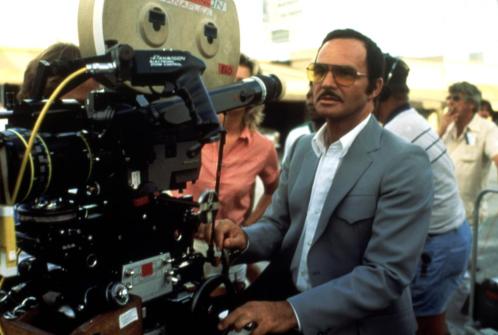
…the latter of which also marked the start of his directing career.

One of Burt’s best and most famous movies, THE LONGEST YARD, shows what he can do without mustache power. It’s one of the greatest sports movies ever made.

Coming from the same director a year later, HUSTLE was a very underrated crime film. Guaranteed Michael Mann saw this one somewhere along the line.

Here’s Burt co-starring with Gene Hackman, one of the key actors in the New Hollywood. In this era, guys like De Niro and Pacino, Hoffman and Hackman, began to redefine naturalistic acting on film.

And just as American movies were getting more serious, Burt went the other way.

This is SMOKEY & THE BANDIT, the movie that was a colossal hit for Burt and his friend, the director and legendary stunt man Hal Needham.

While most highbrow critics don’t give any kind of attention to Hal Needham’s work, I think it’s very important, not least because of how it showcases the severely under-appreciated art of movie stunts.

HOOPER was maybe Hal Needham’s most personal movie, showing the life of a Hollywood stuntman. It’s great.

So is its Japanese poster.

Even amidst the popularity of all the Hal Needham movies, Burt continued to direct, and this is also the era where he buddied up with Dom DeLuise.

Burt and Dom together are magic, they’re infectious, you can’t not love watching them,

But they’re also clowns. Their movies together are live-action cartoons.

If all you know is THE CANNONBALL RUN, it’s very easy to lose sight of Burt’s dramatic talents.

When Burt makes a movie like this…

…It’s easier for cinematic tastemakers to forget that, the same year, he also made a movie like this.

SHARKY’S MACHINE is really worth seeing. I wish Burt’s career had continued with him directing more of this kind of melancholy, sleazy crime movie.

Burt made an Elmore Leonard adaptation before it became the in-thing to do.

There’s a better film out there going by the same name, but HEAT is still pretty special, a perfect showcase for Burt as a tough guy whose glory was beginning to fade.

Teaming him up with his old buddy Clint Eastwood, 1984’s CITY HEAT should have been a hit. It wasn’t.

I think the contrast between Clint and Burt at this stage of their careers is very telling. Both of them were stars who appealed to men as much as women. Both of them are better actors than most people recognize. Both of them directed. But only one of them became a mainstream Academy Award winning institution.

I love Clint, never get me wrong, but he would never let himself be the butt of the joke, the way Burt did so many times. Even in the movies he made with the orangutan, Clint was always the coolest guy in the room. In CITY HEAT, he calls Burt “Shorty.” The final line of the movie from Clint is, “You’ll always be Shorty to me.” And he gets the last word. [Clint is 6’4?, Burt is 5’11”.]
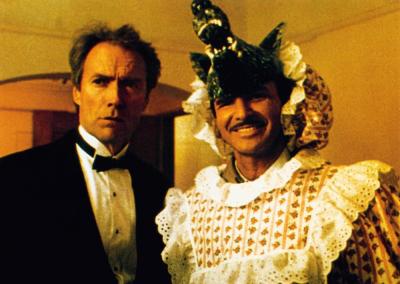
Notice who’s wearing the nice suit and who’s wearing the silly costume.

This is also the era when Burt became more famous for tabloids than for movies. For one thing, a facial injury he sustained on the set of CITY HEAT led to a rumor Burt had AIDS. If you remember the ‘eighties, there was a lot of spite and prejudice in a rumor like that.

This is also around the time Burt met Loni Anderson.

It isn’t like Burt wasn’t famous for his offscreen relationships before, but this was where it started to overshadow his onscreen work.

In his book, Burt isn’t mean about it, but he indicates he got swept up in the relationship in a way he wishes he hadn’t.

Guess that’s hard to say no to, no matter what your type is.
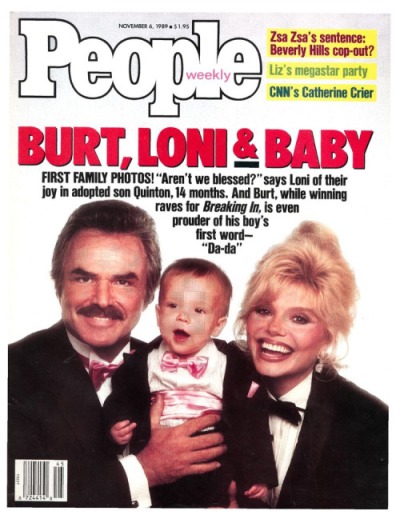
Burt says this was one of the happiest times of his life…

…but then also the worst.

Again, headlines like these are the primary basis of his celebrity in the late 1980s. By contrast, Clint was really taking off as a serious filmmaker, going from BIRD to UNFORGIVEN.

People see Loni Anderson, a blonde bombshell, and they probably make assumptions about her, and about Burt for being into her. But the loves of Burt’s life were girl-next-door types.
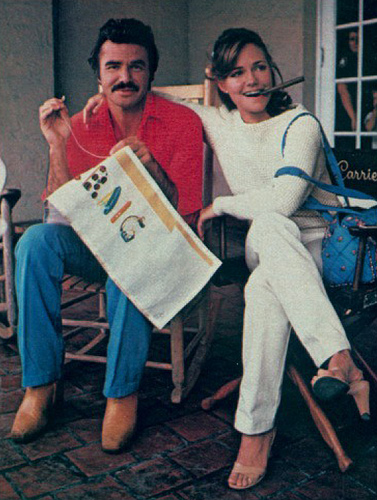
The chapter in the book on Burt’s regrets about it not working out with Sally Field is really affecting.

So real life got sadder, and then these were the kinds of movies Burt was getting. No offense to COP AND A HALF, but it’s no IN THE LINE OF FIRE.

In the ‘nineties, Burt went back to TV for Evening Shade, a show that had one of the greatest ensemble casts ever, but it was on CBS at a time when it wasn’t cool at all to be on CBS, assuming that time ever existed.
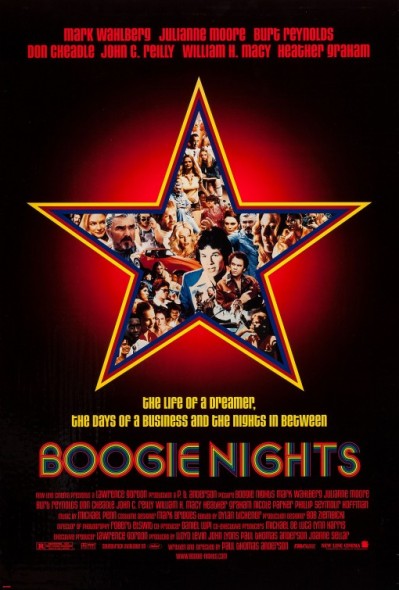
Then, towards the end of the decade, this came along.

By the time Burt gives his phenomenal half-dramatic/half-comedic performance in BOOGIE NIGHTS, nobody seemed to remember that’s what he’d been doing all along.
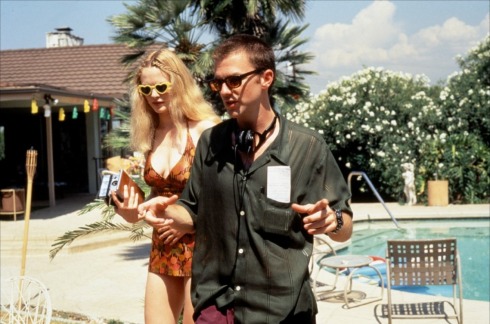
I think movie fans of my generation revere this movie and we revere Paul Thomas Anderson’s work in general. BOOGIE NIGHTS is a great American movie. But it was well publicized that Burt was uncomfortable with it. He’s still never seen it all the way through. Anderson went on to make several more great films, and Burt didn’t. This kind of stuff leads people to take sides, and most go with the brilliant auteur over the so-called has-been. But it’s not that simple.

For one thing, Burt was 62 when he made Boogie Nights. Paul Anderson was 27. Keep in mind Burt started acting back in the 1950s. Imagine you’re Burt and some kid is asking you to do and say some pretty damn out-there things.BOOGIE NIGHTS isn’t porn, but it’s sure got porn dialogue. Burt was the son of a police chief. He was raised to be a gentleman. He had valid reasons to be concerned about his image at this point in time. I don’t think Burt Reynolds is an uptight guy, but I also think it’s okay if he wasn’t too comfortable calling Julianne Moore a “foxy bitch.”

Burt was incredible in BOOGIE NIGHTS, but just about everything that came afterwards was underwhelming. THE DUKES OF HAZZARD was a movie based on an old TV show that was itself a rip-off of SMOKEY & THE BANDIT, and now Burt was getting novelty-cast in the Jackie Gleason role.


Don’t even get me started on this travesty. (Adam Sandler as Paul Crewe? Nah, son.)

So the full-on renaissance he deserved didn’t happen. Burt returned to Florida. He runs an acting school there now.

Can you imagine getting acting lessons from Burt Reynolds? That’s a movie right there.

Burt turned 80 this month. If I had to bet on any human being lasting past a hundred, it’d be him, but still.

Too often the critical re-evaluations come too late. I don’t think it’s too radical for me to suggest that the work of one of the most popular movie stars in history is worth another look.
Let’s not let a legend go under-remembered in his own time. And one last thing about the book: It not only has chapters remembering Bette Davis, Lee Marvin, and Frank Sinatra, but there’s also one dedicated to the horse Burt rode in the movie NAVAJO JOE. What’s better than that? Isn’t this a guy worth reading about?
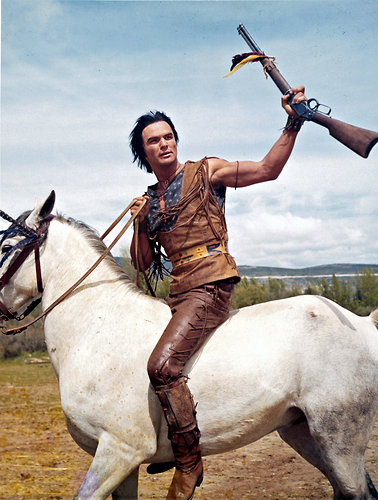
— JON ABRAMS.

- [THE BIG QUESTION] WHAT’S YOUR FAVORITE FEMALE ENSEMBLE IN MOVIES? - July 22, 2016
- [IN THEATERS NOW] THE BOY (2016) - January 24, 2016
- Cult Movie Mania Releases Lucio Fulci Limited Edition VHS Sets - January 5, 2016
Tags: Awesomeness, Badass Old Guys, Brooklyn, Burt Reynolds, Cars, Clint, Dogs, Ernest Borgnine, Henry Silva, Horses, Jim Brown, Kevin Geeks Out, Lee Marvin, Nitehawk Cinema, Pretty Girls, Raquel Welch, Richard Roundtree, sports, Trucks, TV

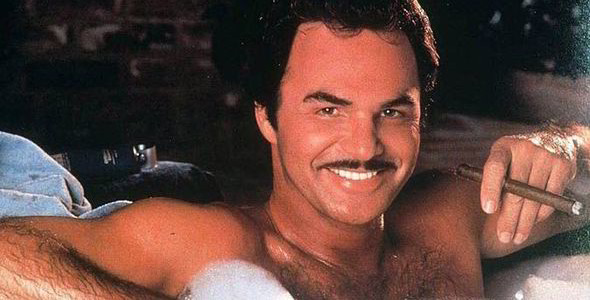
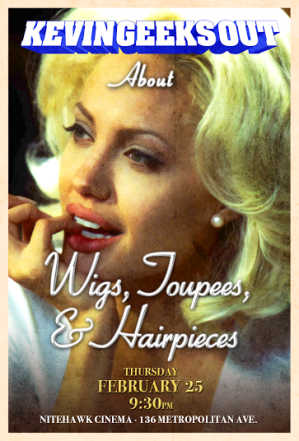

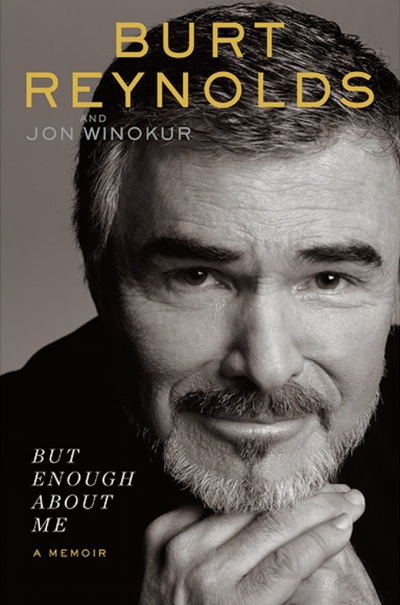




Bogart (presumably) said: “If at the end of your career you’ve got five films you’re proud of, you’ve beaten the odds”. Burt has those films…and then some. No mention of ‘Breaking In’ or ‘Starting Over’ in this retrospective, but those are total gems. I once talked with Elmore Leonard about Stick: his claim was Burt couldn’t square himself with making a ‘deal’ with the drug kingpin at the end of the film, so he brought in a friend to rewrite. Big mess.